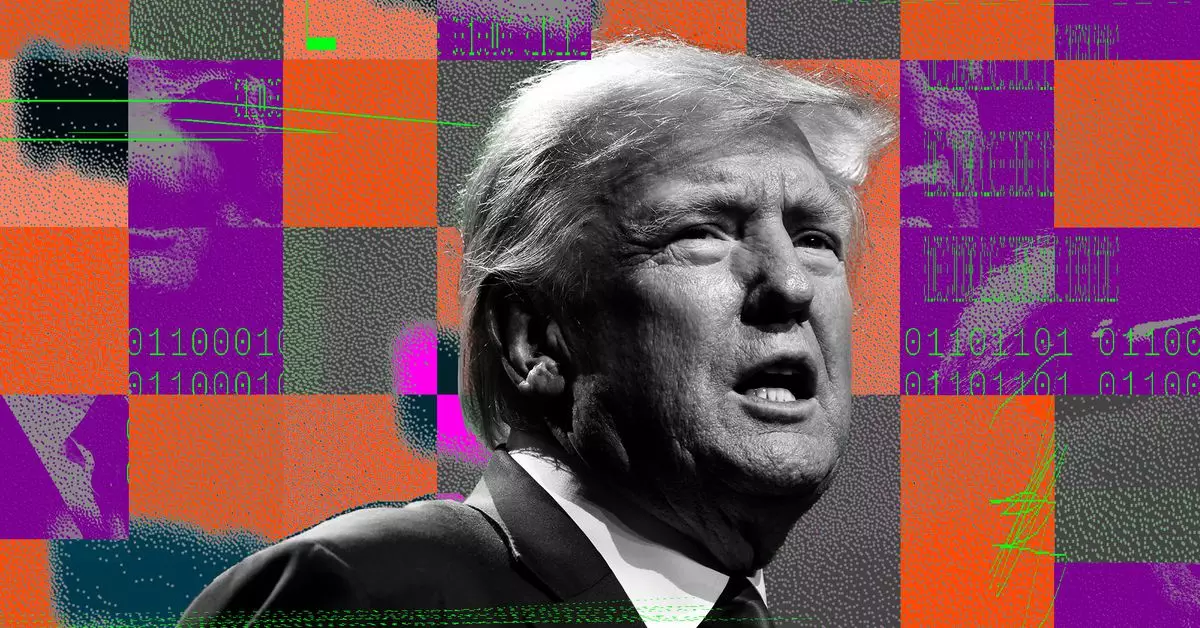In an unexpected twist in the ongoing narrative between the U.S. government and the Chinese-based social media giant TikTok, President-elect Donald Trump has made a strategic move by appealing to the Supreme Court. His amicus brief suggests he is eager to negotiate terms that would prevent an imminent ban on TikTok, framing the situation not merely as a regulatory challenge but as a wider political dilemma that could shape the discourse around tech, privacy, and free speech in America. With Trump’s declaration that he possesses the political will and expertise necessary to seal a deal, his stance highlights the intricate connections between leadership, technology, and governance in today’s digital age.
The backdrop of Trump’s appeal is a critical legal challenge involving a bill passed by Congress, which aims to impose a ban on TikTok, citing national security concerns. The Supreme Court agreed to review whether the proposed ban infringes upon the First Amendment rights of users. The bill, which provides the President with considerable leeway in terms of enforcement, requires executive assessment on whether meaningful negotiations can prevent full control of TikTok by its Chinese parent company, ByteDance. This creates a time-sensitive scenario, as the court’s deadline for a decision is set for January 19th, a day before Trump’s inauguration.
The implications of this case extend well beyond TikTok itself. It underscores the delicate balance between national security interests and the protection of free speech within the digital ecosystem. Trump’s appeal to delay the enforcement of the ban until he assumes office suggests that he intends to utilize his bargaining power and relationships to craft a solution. However, the lack of specific details regarding the potential deal raises questions about transparency and the feasibility of such negotiations.
Trump’s position on TikTok has evolved significantly since his first term. During that time, he ardently pursued a ban, fearing the influence of foreign entities on American information flow. Yet now, after witnessing the successful utilization of TikTok during his 2024 campaign, Trump appears to acknowledge the platform’s importance as a conduit for political expression and outreach. His recent engagement with TikTok’s CEO, Shou Chew, indicates a pragmatic shift, suggesting that TikTok may be too valuable to sacrifice for political posturing alone.
In citing examples from other countries, such as Brazil’s temporary ban on Elon Musk’s X platform, Trump invokes broader arguments about the dangers of government-imposed media restrictions. His rhetoric reflects a growing concern among various factions about the implications of censoring digital platforms, particularly when those actions can stifle public discourse and political dialogue.
The dynamics at play in Trump’s negotiations are emblematic of the broader challenges that arise when political imperatives intersect with technological governance. As more social media platforms emerge, questions about ownership, control, and user rights are increasingly becoming focal points of contention in policy discussions. The potential for a deal involving the sale of TikTok shares to an American entity signifies an evolving understanding of global tech partnerships and provides insight into the complexities facing the modernization of American cybersecurity and digital policy.
Moreover, pressure is mounting from a coalition of political leaders, including prominent senators who have rallied for an outright ban, suggesting that despite Trump’s efforts, there remains significant opposition to TikTok’s continued operations in the U.S. The juxtaposition of Trump’s recent endorsement of TikTok against this backdrop emphasizes the fractures within the political landscape around technology usage.
As Trump navigates this politically charged terrain, the outcome of his appeal will likely set important precedents for future interactions between the U.S. government and tech giants. The decision on whether TikTok can remain operational in the U.S. could influence how government agencies approach similar cases in the future. Ultimately, this scenario serves as a reminder of the intricate interplay between democracy, technology, and free expression in shaping the American digital landscape. As the nation stands on the cusp of potential change, the stakes have never been higher for both users and policymakers alike.

